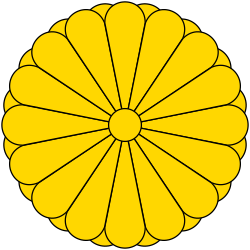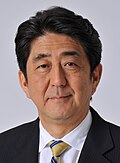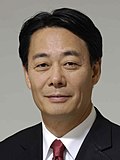| District | Magnitude | Incumbents | Winners & runner-up [+incumbents if lower] with vote share (/votes for PR members) | Gains & losses by party |
|---|
| Hokkaidō [15] | 2 | Katsuya Ogawa (D)
Chūichi Date (L) | Chūichi Date (L – K) 37.7%
Katsuya Ogawa (D) 24.4%
Takahiro Asano (Daichi) 14.7% | |
|---|
| Aomori [16] | 1 | Kōji Hirayama (PLP) | Motome Takisawa (L – K) 51.3%
Kōji Hirayama (PLP – SDP, Mikaze) 15.0% | PLP -1
L +1 |
|---|
| Iwate [17] | 1 | Tatsuo Hirano (I) | Tatsuo Hirano (I) 39.7%
Shin'ichi Tanaka (L – K) 26.4% | |
|---|
| Miyagi [18] | 2 | Tomiko Okazaki (D)
Jirō Aichi (L) | Jirō Aichi (L - K) 44.7%
Masamune Wada (Minna) 23.3%
Tomiko Okazaki (D) 22.8% | D -1
Minna +1 |
|---|
| Akita [19] | 1 | Daigo Matsuura (D) | Matsuji Nakaizumi (L - K) 52.3%
Daigo Matsuura (D) 39.0% | D -1
L +1 |
|---|
| Yamagata [20] | 1 | Yasue Funayama (Mikaze) | Mizuho Ōnuma (L - K) 48.2%
Yasue Funayama (Mikaze – S) 44.6% | Mikaze -1
L +1 |
|---|
| Fukushima [21] | 1 (-1) | Emi Kaneko (D)
Masako Mori (L) | Masako Mori (L - K) 56.6%
Emi Kaneko (D) 28.2% | D -1 |
|---|
| Ibaraki [22] | 2 | Yukihisa Fujita (D)
Tamon Hasegawa (L) | Ryōsuke Kōzuki (L - K) 48.4%
Yukihisa Fujita (D) 17.6%
Junko Ishihara (Minna) 13.3% | |
|---|
| Tochigi [23] | 1 | Hiroyuki Tani (D) | Katsunori Takahashi (L - K) 48.1%
Tomomi Oki (Minna) 25.8%
Hiroyuki Tani (D) 20.3% | D -1
L +1 |
|---|
| Gunma [24] | 1 | Ichita Yamamoto (L) | Ichita Yamamoto (L - K) 71.9%
Fujiko Kagaya (D) 15.3% | |
|---|
| Saitama [25] | 3 | Kuniko Kōda (Minna)
Toshiharu Furukawa (L)
Ryūji Yamane (D) | Toshiharu Furukawa (L) 34.1%
Katsuo Yakura (K – L) 20.4%
Kuniko Kōda (Minna) 16.5%
Ryūji Yamane (D) 13.3% | D -1
K +1 |
|---|
| Chiba [26] | 3 | Hiroyuki Nagahama (D)
Jun'ichi Ishii (L)
Ken Kagaya (D) | Jun'ichi Ishii (L – K) 28.5%
Toshirō Toyoda (L – K) 17.5%
Hiroyuki Nagahama (D) 16.3%
Masahiro Terada (Minna) 11.9% | D -1
L +1 |
|---|
| Tokyo [27] | 5 | Masako Ōkawara (I)
Natsuo Yamaguchi (K)
Kan Suzuki (D)
Ryūhei Kawada (Minna)
Tamayo Marukawa (L) | Tamayo Marukawa (L) 18.9%
Natsuo Yamaguchi (K) 14.2%
Yoshiko Kira (C) 12.5%
Tarō Yamamoto (I) 11.8%
Keizō Takemi (L) 10.9%
Kan Suzuki (D) 9.8%
...
Masako Ōkawara (I) 4.2% | D -1, Minna -1, I (ex-D) -1
L +1, C +1, I (PLP-aligned) +1 |
|---|
| Kanagawa [28] | 4 (+1) | Hiroe Makiyama (D)
Masashi Mito (Ishin)
Akira Matsu (K) | Dai Shimomura (L) 28.8%
Shigefumi Matsuzawa (Minna) 18.8%
Sayaka Sasaki (K) 16.0%
Hiroe Makiyama (D) 11.7%
Kimie Hatano (C) 11.3%
Masashi Mito (Ishin) 6.2% | Ishin -1
L +1, Minna +1 |
|---|
| Niigata [29] | 2 | Ichirō Tsukada (L)
Yūko Mori (PLP) | Ichirō Tsukada (L – K) 43.3%
Naoki Kazama (D) 19.3%
Yūko Mori (PLP) 15.6% | PLP -1
D +1 |
|---|
| Toyama [30] | 1 | Takashi Morita (I) | Shigeru Dōkō (L – K) 77.1%
Wataru Takahashi (C) 12.1% | I (ex-PNP) -1
L +1 |
|---|
| Ishikawa [31] | 1 | Yasuo Ichikawa (D) | Shūji Yamada (L – K) 64.8%
Yasuo Ichikawa (D) 23.0% | D -1
L +1 |
|---|
| Fukui [32] | 1 | Ryūji Matsumura (L) | Hirofumi Takinami (L – K) 70.6%
Toshikazu Fujino (D) 16.8% | |
|---|
| Yamanashi [33] | 1 | Harunobu Yonenaga (Minna) | Hiroshi Moriya (L – K) 37.3%
Takahiro Sakaguchi (I – D, S) 19.8%
...
Harunobu Yonenaga (Minna) 15.4% | Minna -1
L +1 |
|---|
| Nagano [34] | 2 | Yūichirō Hata (D)
Hiromi Yoshida (L) | Hiromi Yoshida (L – K) 37.2%
Yūichirō Hata (D) 30.0%
Chiaki Karasawa (C) 15.8% | |
|---|
| Gifu [35] | 1 (-1) | vacant
(last held by Takao Fujii, Ishin)
Kenji Hirata (D) | Yasutada Ōno (L – K) 58.8%
Rie Yoshida (D) 25.6% | D -1
L +1 |
|---|
| Shizuoka [36] | 2 | Kazuya Shinba (D)
Takao Makino (L) | Takao Makino (L – K) 41.5%
Kazuya Shinba (D) 30.0%
Yukiko Suzuki (Minna) 12.2% | |
|---|
| Aichi [37] | 3 | Kōhei Ōtsuka (D)
Seiji Suzuki (L)
Kuniko Tanioka (Mikaze) | Yasuyuki Sakai (L – K) 35.4%
Kōhei Ōtsukai (D) 24.9%
Michiyo Yakushiji (Minna) 11.6%
Nobuko Motomura (C) 9.1%
...
Makoto Hirayama [38] (Mikaze – PLP) 2.1% | Mikaze -1
Minna +1 |
|---|
| Mie [39] | 1 | Chiaki Takahshi (D) | Yūmi Yoshikawa (L – K) 44.2%
Chiaki Takahshi (D) 37.6% | D -1
L +1 |
|---|
| Shiga [40] | 1 | Hisashi Tokunaga (D) | Takeshi Ninoyu (L – K) 53.4%
Hisashi Tokunaga (D) 29.2% | D -1
L +1 |
|---|
| Kyoto [41] | 2 | Kōji Matsui (D)
Shōji Nishida (L) | Shōji Nishida (L – K) 37.0%
Akiko Kurabayashi (C) 20.7%
Keirō Kitagami (D) 19.0% | D -1
C +1 |
|---|
| Osaka [42] | 4 (+1) | Satoshi Umemura (D)
Kazuyoshi Shirahama (K)
Shūzen Tanigawa (L) | Tōru Azuma (Ishin) 28.8%
Takuji Yanagimoto (L) 22.3%
Hisatake Sugi (K) 19.0%
Kōtarō Tatsumi (C) 12.8%
Satoshi Umemura (D) 9.2% | D -1
C +1, Ishin +1 |
|---|
| Hyōgo [43] | 2 | Yasuhiro Tsuji (D)
Yoshitada Kōnoike (L) | Yoshitada Kōnoike (L – K) 37.8%
Takayuki Shimizu (Ishin) 26.1%
Yasuhiro Tsuji (D) 15.0% | D -1
Ishin +1 |
|---|
| Nara [44] | 1 | vacant
(last held by Tetsuji Nakamura, LF/TPJ) | Iwao Horii (L – K) 58.6%
Takanori Ōnishi (D) 23.1% | L +1 |
|---|
| Wakayama [45] | 1 | Hiroshige Sekō (L) | Hiroshige Sekō (L – K) 77.3%
Yasuhisa Hara (C) 19.0% | |
|---|
| Tottori [46] | 1 | Yoshihiro Kawakami (D) | Shōji Maitachi (L – K) 58.2%
Yoshihiro Kawakami (D) 30.0% | D -1
L +1 |
|---|
| Shimane [47] | 1 | Akiko Kamei (Mikaze) | Saburō Shimada (L – K) 57.8%
Akiko Kamei (Mikaze – S) 32.9% | Mikaze -1
L +1 |
|---|
| Okayama [48] | 1 | vacant
(last held by Yumiko Himei, LF/TPJ) | Masahiro Ishii (L – K) 65.5%
Takashi Takai (I – D, S, Mikaze) 24.1% | L +1 |
|---|
| Hiroshima [49] | 2 | Kōji Satō (PLP)
Kensei Mizote (L) | Kensei Mizote (L – K) 46.3%
Shinji Morimoto (D) 17.2%
Kana Haioka (Ishin) 15.4%
Kōji Satō (PLP – Mikaze) 12.2% | PLP -1
D +1 |
|---|
| Yamaguchi [50] | 1 | Yoshimasa Hayashi (L) | Yoshimasa Hayashi (L – K) 79.4%
Naoko Fujii (C) 16.6% | |
|---|
| Tokushima [51] | 1 | Tomoji Nakatani (D) | Tōru Miki (L – K) 57.5%
Tomoji Nakatani (D) 29.1% | D -1
L +1 |
|---|
| Kagawa [52] | 1 | Emiko Uematsu (I) | Shingo Miyake (L – K) 56.0%
Emiko Uematsu (I) 34.2% | I (ex-D) -1
L +1 |
|---|
| Ehime [53] | 1 | vacant
(last held by Toshirō Tomochika, LF/TPJ) | Takumi Ihara (L – K) 66.6%
Kayoko Fujioka (Minna) 18.4% | L +1 |
|---|
| Kōchi [54] | 1 | Norio Takeuchi (D) | Kōjirō Takano (L – K) 52.9%
Yuriko Hamakawa (C) 24.1%
Norio Takeuchi (D) 21.6% | D -1
L +1 |
|---|
| Fukuoka [55] | 2 | Tsukasa Iwamoto (D)
Masaji Matsuyama (L) | Masaji Matsuyama (L – K) 49.2%
Kuniyoshi Noda (D – PLP) 17.9%
Toshiyuki Yoshida (Ishin) 11.4% | |
|---|
| Saga [56] | 1 | Minoru Kawasaki (I) | Yūhei Yamashita (L – K) 64.6%
Kazunori Aoki (D) 24.1% | I (ex-D) -1
L +1 |
|---|
| Nagasaki [57] | 1 | Yukishige Ōkubo (D) | Yūichirō Koga (L – K) 59.2%
Yukishige Ōkubo (D – Mikaze) 30.7% | D -1
L +1 |
|---|
| Kumamoto [58] | 1 | Nobuo Matsuno (D) | Seishi Baba (L – K) 60.6%
Nobuo Matsuno (D – Mikaze) 29.8% | D -1
L +1 |
|---|
| Ōita [59] | 1 | Yōsuke Isozaki (L) | Yōsuke Isozaki (L – K) 50.0%
Shintarō Gotō (I – S, PLP, Mikaze) 27.3% | |
|---|
| Miyazaki [60] | 1 | vacant
(last held by Itsuki Sotoyama, LF/TPJ) | Makoto Nagamine (L – K) 69.3%
Seiichirō Dōkyū (D) 18.6% | L +1 |
|---|
| Kagoshima [61] | 1 | Hidehisa Otsuji (L) | Hidehisa Otsuji (L – K) 59.0%
Inao Minayoshi (D) 17.7% | |
|---|
| Okinawa [62] | 1 | Keiko Itokazu (OS) | Keiko Itokazu (OS – C, S, PLP, Mikaze) 51.1%
Masaaki Asato (L – K) 45.4% | |
|---|
| National | 48 | D 16
L 12
K 7
C 3
PLP 3
S 2
Ishin 1
Mikaze 1
Daichi 1
NRP 1
I 1 | L 34.7% of proportional votes→18 seats: [63]
Yoshifumi Tsuge 429,002
Toshio Yamada 338,485
Masahisa Satō 326,541
Midori Ishii 294,148
Seiko Hashimoto 279,952
Takashi Hanyūda 249,818
Nobuaki Satō 215,506
Masaaki Akaike 208,319
Akiko Santō 205,779
Seiichi Etō 204,404
Masahiro Ishida 201,109
Haruko Arimura 191,343
Shūji Miyamoto 178,480
Kazuya Maruyama 153,303
Tsuneo Kitamura 142,613
Miki Watanabe 104,176
Yoshio Kimura 98,979
Fusae Ōta 77,173
Masaru Wakasa 76,829 | D -9, PLP -3, S -1, Daichi -1, Mikaze -1
NRP -1, I -1
L +6, C +2, Ishin +5, Minna +4 |
|---|
K 14.2% of proportional votes→7 seats: [64]
Kanae Yamamoto 996,959
Daisaku Hiraki 770,682
Yoshihiro Kawano 703,637
Hiroshi Yamamoto 592,814
Kaneshige Wakamatsu 577,951
Yūichirō Uozumi 540,817
Hideki Niizuma 26,044
Nobuo Kawashima 7,737 |
D 13.4% of proportional votes→7 seats: [65]
Tetsuji Isozaki 271,553
Yoshifumi Hamano 235,917
Kumiko Aihara 235,636
Kusuo Ōshima 191,167
Mieko Kamimoto 176,248
Saori Yoshikawa 167,437
Toshio Ishigami 152,121
Takanori Kawai 138,830
Hajime Ishii 123,355
...
Toshiharu Todoroki 103,996
Marutei Tsurunen 82,858
...
Yoshikazu Tarui 13,178 |
Ishin 11.9% of proportional votes→6 seats: [66]
Antonio Inoki 356,605
Kyōko Nakayama 306,341
Mitsuo Gima 40,484
Takeshi Fujimaki 33,237
Masashi Nakano 32,926
Kunihiko Muroi 32,107
Hirokazu Tsuchida 28,616 |
C 9.7% of proportional votes→5 seats: [67]
Akira Koike 134,325
Yoshiki Yamashita 129,149
Tomoko Kami 68,729
Satoshi Inoue 50,874
Kōhei Nihi 39,768
Yūko Yamamoto 36,580 |
Minna 8.9% of proportional votes→4 seats: [68]
Ryūhei Kawada 117,389
Kazuyuki Yamaguchi 75,000
Michitarō Watanabe 50,253
Yoshiyuki Inoue 47,756
Jun'ichi Kawai 39,425 |
S 2.4% of proportional votes→1 seat: [69]
Seiji Mataichi 156,1555
Hiroji Yamashiro 112,641 |
Incumbents on other party lists without seat:
PLP (1.8%): Tadashi Hirono, Yoshinobu Fujiwara [70]
Daichi (1.0%): none [71]
Midori (0.9%): none [72]
Mikaze (0.8%): Kuniko Tanioka [73]
HRP (0.4%): none [74] |









